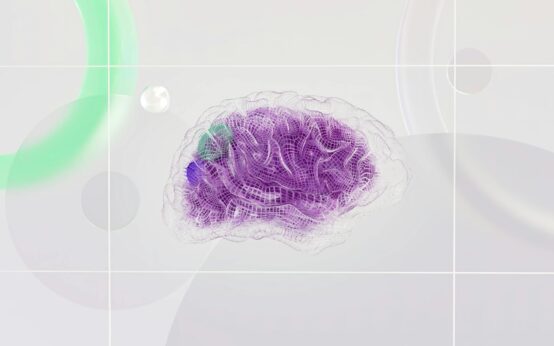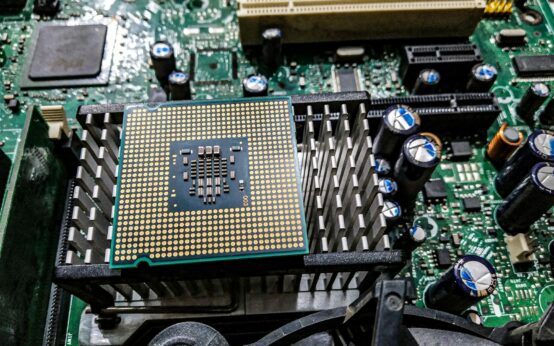Remember sitting in a math class, staring at the board, completely lost? Maybe the teacher was moving too fast. Or maybe, just maybe, you’d already gotten it and were bored out of your mind. We’ve all been there. The one-size-fits-all model of education has been the standard for centuries, but it’s always had cracks. Now, those cracks are being filled by something that sounds like it’s straight out of science fiction: AI in education. It’s a term that gets thrown around a lot, often conjuring images of robot teachers and dystopian classrooms. But the reality is far more subtle, and honestly, far more exciting. It’s about creating a learning experience that’s as unique as each student.
So, what are we really talking about? We’re not talking about replacing the essential human connection that a great teacher provides. Not at all. We’re talking about supercharging it. It’s about giving teachers tools that handle the monotonous, time-sucking tasks so they can focus on what they do best: inspiring, mentoring, and guiding young minds. It’s about giving students a co-pilot for their learning journey, one that’s patient, available 24/7, and knows exactly what they need to work on next. This isn’t just a futuristic dream; it’s happening right now, in pockets of innovation all over the world, and it’s poised to change everything.
Key Takeaways
- Personalized Learning: AI tailors educational content to individual student needs, allowing them to learn at their own pace and master concepts before moving on.
- Teacher Empowerment: By automating tasks like grading and administrative work, AI frees up teachers’ time to focus on high-impact activities like one-on-one instruction and lesson planning.
- Enhanced Accessibility: AI tools can provide real-time translation, text-to-speech functionality, and other aids, making education more accessible for students with disabilities or language barriers.
- Ethical Considerations: While powerful, the implementation of AI in schools raises critical questions about data privacy, algorithmic bias, and digital equity that must be addressed.
What Does AI in Education Actually Look Like?
Let’s clear the air. When we talk about AI in the classroom, we’re rarely talking about a physical robot. Most of the time, the AI is invisible. It’s the smart software, the complex algorithms, and the data-processing engines working tirelessly behind the screen. It’s less ‘The Jetsons’ and more ‘the genius in the machine’. Think of it as a set of powerful tools designed to augment, not replace, the traditional educational experience. Here’s a breakdown of how it’s showing up.
Personalized Learning Paths
This is the holy grail. The core promise of AI in education. Imagine a digital learning platform that understands your child’s learning style. It knows she’s a visual learner who struggles with fractions but excels at geometry. So, the platform presents fraction problems using visual models and interactive games. When she masters a concept, the difficulty ramps up. If she gets stuck, it offers a different explanation or a simpler, foundational problem to reinforce the basics. It’s not about just getting the right answer; it’s about understanding the why. Platforms like Khan Academy and DreamBox are already doing this, using AI to create a unique educational roadmap for every single student. The result? Students are more engaged because they’re being challenged appropriately—not bored, not overwhelmed. Just right.
Smart Tutors and Instant Feedback
Homework can be a source of major friction in many households. The ‘I don’t get it!’ followed by parental frustration is a tale as old as time. AI-powered tutoring systems act as an infinitely patient homework helper. A student can ask a question at 10 PM on a Sunday and get an immediate, step-by-step explanation. They can work through a problem and get instant feedback on where they went wrong, a crucial element for reinforcing learning that a teacher with 30 other students simply can’t provide for every single assignment. This isn’t about giving away the answers. Good AI tutors guide students to find the answer themselves, fostering critical thinking and problem-solving skills. They are a supplement, a safety net that ensures no student is left behind just because they couldn’t get help outside of school hours.

Automating the Drudgery for Teachers
Let’s talk about teachers. They are the heart of our education system, and they are often buried in paperwork. Grading tests, managing attendance, inputting data, flagging plagiarism—these administrative tasks can consume a shocking amount of their time. Time that could be spent creating an inspiring lesson plan, mentoring a struggling student, or just recharging their own batteries. AI is a game-changer here. Tools can automatically grade multiple-choice and fill-in-the-blank assessments, freeing up hours each week. Sophisticated plagiarism detectors can scan essays in seconds. AI can even help analyze class-wide performance data to quickly identify which concepts the entire class found difficult, allowing a teacher to adjust their lesson plan for the next day. It’s about giving teachers back their most valuable resource: time.
The Tangible Benefits: Why Should We Even Care?
This all sounds great in theory, but what about the real-world impact? The push for integrating AI into our schools isn’t just about chasing the latest tech trend. It’s rooted in the potential for profound, positive change in how we teach and learn. It’s about creating a more effective, equitable, and engaging educational ecosystem for everyone involved.
Making Learning Accessible to Everyone
One of the most powerful applications of AI is its ability to break down barriers to learning. For a student with dyslexia, AI-powered text-to-speech tools can read textbooks aloud. For a student who is deaf or hard of hearing, AI can provide real-time captioning of a teacher’s lecture. For a student who just moved to the country and doesn’t speak the language, translation tools can help them keep up in class while they learn. This technology helps level the playing field, ensuring that a student’s physical or linguistic challenges don’t dictate their educational destiny. It’s about fostering genuine inclusivity.
Boosting Engagement and Retention
Let’s be honest: traditional lectures can be boring. AI can help transform passive learning into an active, engaging experience. Think of educational games that adapt to a student’s skill level (a concept known as gamification). Or interactive simulations that allow a biology student to conduct a virtual frog dissection without the formaldehyde. When content is interactive and personalized, students are more likely to stay focused, absorb the material, and, most importantly, retain it. They become active participants in their education rather than passive recipients of information. This isn’t just about making school ‘fun’; it’s about tapping into the neuroscience of how our brains learn best.
Data-Driven Insights for Better Teaching
Great teachers have always had an intuition for how their students are doing. AI gives them superpowers by backing up that intuition with hard data. An AI-powered dashboard can show a teacher, at a glance, that 70% of her class is struggling with a specific algebra concept. It can flag a student who is suddenly performing below their usual standard, prompting the teacher to check in with them personally. This isn’t about surveillance. It’s about early intervention. It allows educators to move from a reactive model (waiting for a student to fail a test) to a proactive one (identifying and addressing learning gaps before they become major problems). It’s a fundamental shift in how we can support student success.
The Elephant in the Room: Challenges and Ethical Speed Bumps
It’s easy to get swept up in the utopian vision of AI-powered education. But if we ignore the potential pitfalls, we risk creating a system with new, and perhaps even worse, problems than the one we’re trying to fix. The conversation about AI in schools must include a serious discussion about the ethical guardrails we need to put in place.
The Specter of Bias
This is a big one. An AI is not an objective, all-knowing oracle. It is a system trained on data, and if that data reflects existing societal biases, the AI will learn and perpetuate them. Imagine an automated essay-grading tool that was trained primarily on essays written by native English speakers. It might unfairly penalize a brilliant student who is still learning English for their grammatical structure. Or a system designed to predict ‘at-risk’ students that disproportionately flags students from low-income neighborhoods because of historical data patterns. We must be incredibly vigilant in auditing these algorithms for fairness and ensuring they don’t create digital-era discrimination.
Data Privacy and Security Concerns
AI systems, especially personalized ones, run on data. A lot of data. Student test scores, learning habits, interaction times, even behavioral patterns. This raises a mountain of questions. Who owns this data? How is it being stored and protected from hackers? Are private tech companies using it to develop new products? Parents and educators have every right to be concerned. Schools have a massive responsibility to be transparent about what data is being collected and to partner only with vendors who adhere to the absolute highest standards of data privacy and security. The trust of students and families is at stake.
“The goal is to use technology to empower educators and students, not to replace the human element that is fundamental to learning. Our focus must be on augmenting intelligence, not just automating it.”
The Digital Divide and Equity
What happens when wealthy school districts can afford the latest, most sophisticated AI learning platforms, while underfunded districts are still struggling to provide enough laptops? There is a very real danger that AI could exacerbate the existing equity gap in education. Access to this transformative technology can’t become another privilege. This is a societal challenge that goes beyond individual schools. We need to think about policy solutions and public-private partnerships to ensure that the benefits of AI in education are distributed equitably, so that all students, regardless of their zip code, have the opportunity to thrive.

A Glimpse into the Future: Where is AI in Education Headed?
The tools we have today are just the beginning. The field is evolving at a breathtaking pace, and what seems like science fiction now could be a classroom reality within the next decade. The long-term vision is less about specific tools and more about creating a seamless, lifelong ecosystem of learning.
Immersive Learning with VR and AR
Imagine a history lesson where, instead of just reading about ancient Rome, students can put on a VR headset and walk through a bustling Roman forum. Or an anatomy class where students can use an AR app on their tablet to see a 3D, interactive model of the human heart beating right on their desk. AI will be the engine that powers these immersive experiences, personalizing the virtual worlds to each student’s line of inquiry. This is the future of experiential learning.
The Evolving Role of the Teacher
Let’s put the biggest fear to rest: AI will not make teachers obsolete. It will, however, change their role. Dramatically. As AI takes over more of the direct instruction and assessment, teachers will be freed to become what we might call ‘learning orchestrators’. Their role will shift towards mentoring, fostering collaboration, teaching critical thinking, and nurturing the social-emotional skills that AI can’t replicate. They will become the human guides in a tech-rich landscape, focusing on the uniquely human aspects of growth and development. The job will become less about being a ‘sage on the stage’ and more about being a ‘guide on the side’.
Conclusion
The integration of AI in education isn’t a simple question of ‘if’, but a complex one of ‘how’. It holds the incredible promise of a more personalized, efficient, and accessible learning future for all. It can empower teachers to do their best work and unlock the unique potential within every student. But this is not a plug-and-play solution. It’s a powerful tool that comes with immense responsibility. As we move forward, our focus must remain squarely on the student. We must navigate the ethical challenges with care, demand transparency and fairness from the technology, and never, ever lose sight of the fact that education, at its core, is a deeply human endeavor. The future isn’t about humans versus machines in the classroom; it’s about a powerful partnership between them.
FAQ
- Will AI replace teachers?
- No, that’s highly unlikely. The role of the teacher is evolving, not disappearing. AI is excellent at handling repetitive tasks like grading and delivering personalized content, but it cannot replicate the mentorship, empathy, and complex problem-solving guidance that a human teacher provides. The future is about teachers using AI as a powerful tool to enhance their teaching, not to be replaced by it.
- What’s the best way for a school to start implementing AI?
- The key is to start small and be strategic. Instead of a massive, school-wide overhaul, identify a specific problem area. Is it math remediation? Is it freeing up English teachers’ time from grading essays? Find a high-quality AI tool that addresses that specific need. Prioritize professional development to ensure teachers are comfortable and confident using the new technology. A pilot program with a small group of enthusiastic teachers is often the best way to start.
- Is AI in education safe for my child’s data?
- It depends entirely on the platform and the school’s policies. This is a critical question for parents to ask. Reputable educational technology companies have stringent privacy policies and comply with regulations like FERPA and COPPA. Schools have a responsibility to vet their technology partners carefully, be transparent with parents about what data is being collected, and have clear policies for its use and protection. As a parent, you should always feel empowered to ask these questions of your school administration.



 Top AI Tools for Freelancers to Boost Productivity (2024)
Top AI Tools for Freelancers to Boost Productivity (2024)  Neural Networks Explained: A Beginner’s Guide to AI
Neural Networks Explained: A Beginner’s Guide to AI  AI is Transforming Industries: A Deep Dive for 2024
AI is Transforming Industries: A Deep Dive for 2024  AI Job Displacement: Friend or Foe for Your Career?
AI Job Displacement: Friend or Foe for Your Career?  AI in Agriculture: How Tech is Revolutionizing Farming
AI in Agriculture: How Tech is Revolutionizing Farming  NLP Applications: From Your Phone to Global Business
NLP Applications: From Your Phone to Global Business  Crypto Arbitrage Trading: A Beginner’s Guide (2024)
Crypto Arbitrage Trading: A Beginner’s Guide (2024)  The Business of NFTs: How Top Brands Are Using Them
The Business of NFTs: How Top Brands Are Using Them  What Are ZK-Proofs? A Guide to Blockchain Privacy
What Are ZK-Proofs? A Guide to Blockchain Privacy  DeFi’s Hurdles: Security, Scalability & Regulation
DeFi’s Hurdles: Security, Scalability & Regulation  How to Read a Crypto Whitepaper: A Beginner’s Guide
How to Read a Crypto Whitepaper: A Beginner’s Guide  Find Undervalued NFT Projects: A Complete Guide
Find Undervalued NFT Projects: A Complete Guide